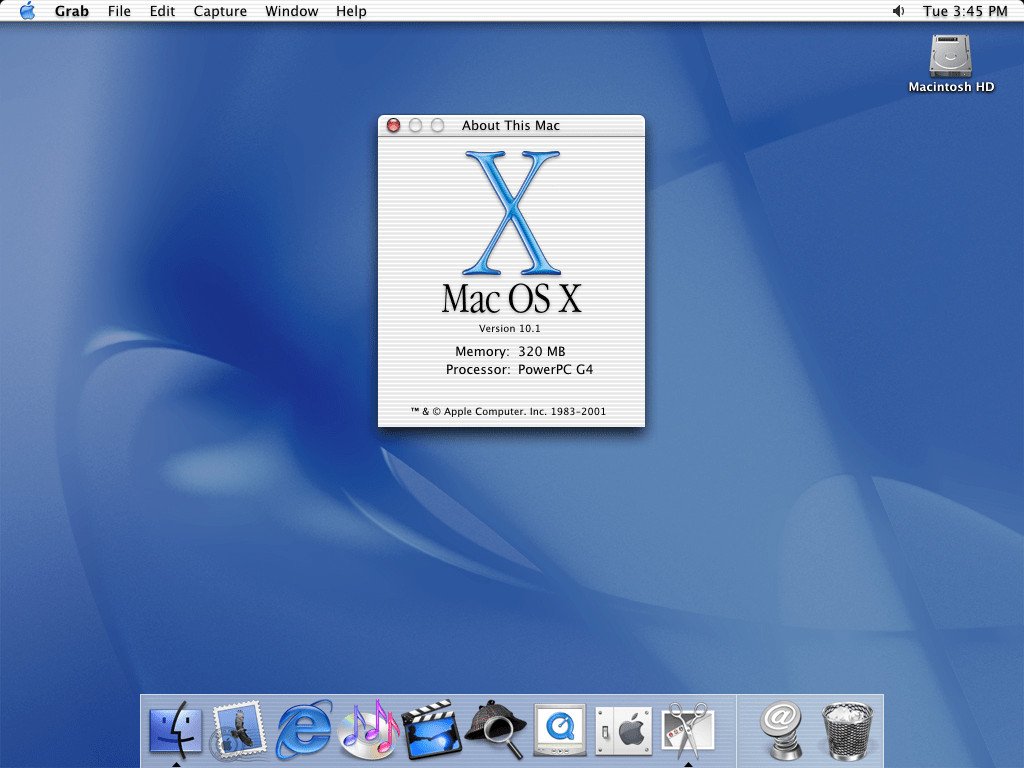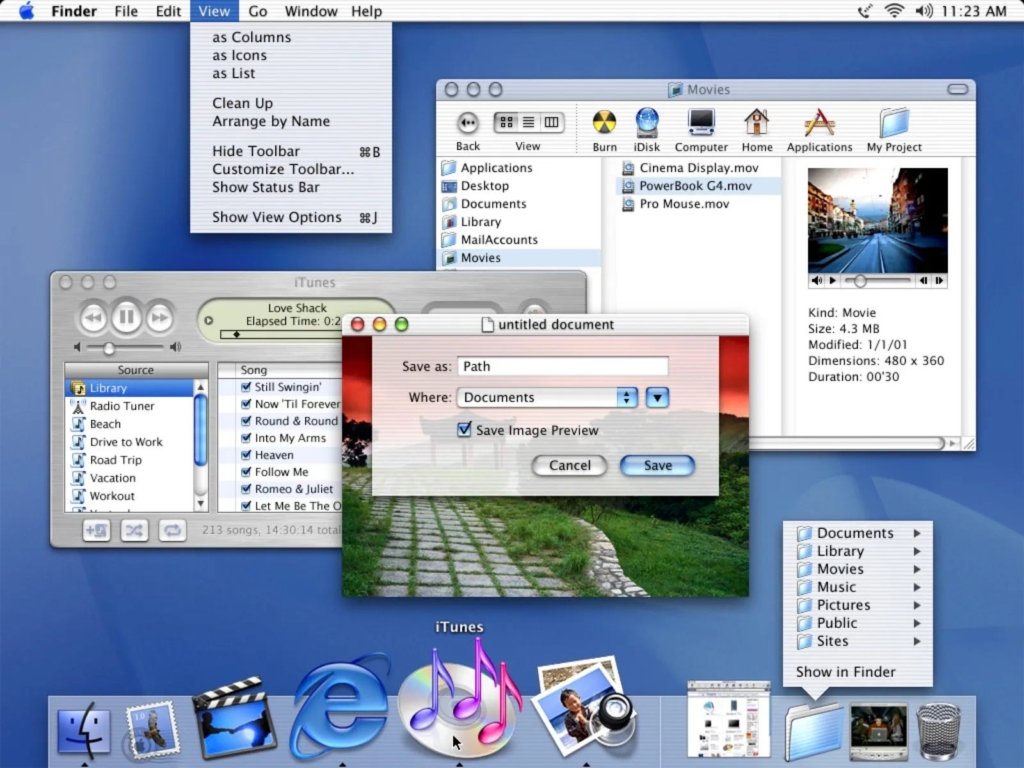In the ever-evolving landscape of technology, there are pivotal moments that mark significant advancements. One such moment in the history of Apple’s operating systems occurred on September 25, 2001, with the release of Mac OS X 10.1 Puma. This groundbreaking operating system marked a giant leap forward from its predecessor, Mac OS X 10.0 Cheetah, addressing criticisms and introducing a slew of features that revolutionized the user experience.
At the Macworld Expo Keynote, Steve Jobs, Apple’s visionary CEO, introduced Mac OS X 10.1 Puma, the first major upgrade to the UNIX-based operating system. The release aimed to address the shortcomings of Cheetah, offering significant performance improvements, enhanced features, and a refined Aqua interface.
Puma delivered on its promises, providing users with a noticeably faster experience. Application launch times were dramatically improved, menus and window resizing became blindingly fast, and overall responsiveness saw a significant boost. The Aqua interface received fine-tuning, allowing users to customize their experience by positioning the Dock on the left, right, or bottom of the screen.
Steve Jobs highlighted user feedback, emphasizing the moveable Dock as a prime example of Apple’s commitment to incorporating user suggestions. With a more responsive feel, Puma became a shining example of how user-centric improvements could shape the evolution of an operating system.
| Released | September 25, 2001 |
| Original Price | Free (Online update for Mac OS X 10.0 Cheetah users) $19.95 (CD with update) $129 |
| System Requirements | PowerPC G3 processor (Unfortunately Original PowerBook G3 is not supported) 128 MB RAM 1.5 GB of hard disk space |
| Distribution | CD-ROM |
| Order Number | M8545LL/A |

Mac OS X 10.1 Puma positioned itself as the ultimate digital hub. Users could create music libraries and burn CDs with iTunes, make movies using iMovie 2, watch DVDs with the DVD Player, and even create DVDs with iDVD. This comprehensive suite of multimedia capabilities solidified Mac OS X’s position at the forefront of digital innovation.
Top developers, including Microsoft, Adobe, Quark, and others, demonstrated their support by showcasing applications that worked seamlessly with Mac OS X 10.1. The operating system’s compatibility with various third-party peripherals, such as printers, cameras, and MP3 players, further expanded its appeal.
Under the hood, Mac OS X 10.1 leveraged its UNIX-based design to enhance system performance significantly. The introduction of data CD burning within the Finder, along with DVD video playback and authoring capabilities for iDVD, made Mac OS X the go-to platform for digital content creation.
Networking capabilities were expanded to include seamless integration with Mac, Windows, Linux, and UNIX environments. The operating system supported various file services, providing users with unprecedented connectivity options. The inclusion of updated OpenGL software and full support for NVIDIA GeForce3 enhanced 3D graphics performance, catering to a broader spectrum of users, from creative professionals to gamers.
The iDisk functionality was also overhauled, utilizing the WebDAV protocol to enable users to stay connected to their iDisk, even behind corporate firewalls. AppleScript received substantial improvements, and full support for Internet Explorer 5.1 with Mac OS X’s Java 2 runtime showcased Apple’s commitment to providing a robust and versatile platform.
Mac OS X v10.1 was set to ship in September, available through various channels, including The Apple Store and Apple Authorized Resellers, for a suggested retail price of $129. Existing users of Mac OS X could upgrade to version 10.1 for a nominal fee of $19.95.
With its faster application launch times, improved window resizing, and the iconic Dock, Mac OS X 10.1 Puma marked a turning point. It was the first version of Mac OS X that users could truly embrace. Whether purchased separately or pre-installed on new computers, its impact was undeniable.

Notable improvements included the introduction of hundreds of new drivers, easing connectivity with various peripheral devices. The ColorSync 4.0 color management system and enhanced 3D graphics performance further solidified Puma’s status as a milestone release.
Despite its relatively short lifespan, with the last update in 2002 and eventual replacement by Mac OS X 10.2 Jaguar, Mac OS X 10.1 Puma remains etched in the history of Apple’s operating systems. Its legacy lives on as a testament to the rapid evolution and continuous innovation that define the Mac OS X journey.
As we celebrate 22 years since the release of Mac OS X 10.1 Puma, it’s not just a trip down memory lane but a reflection on how this operating system laid the groundwork for the sophisticated and powerful macOS we know today.
The user-centric approach, performance enhancements, and expanded capabilities introduced with Puma set the stage for a series of advancements that have shaped the Mac OS X legacy. From humble beginnings to a digital powerhouse, the journey continues, fueled by a commitment to excellence and a dedication to meeting the ever-changing needs of users worldwide.
Mac OS X 10.1 Introduction Keynote
Versions of the Mac OS X Puma
| Versions | Build | Release Date |
| Mac OS X 10.1 | 5G64 | September 25, 2001 |
| Mac OS X 10.1.1 | 5M28 | November 12, 2001 |
| Mac OS X 10.1.2 | 5P48 | December 21, 2001 |
| Mac OS X 10.1.3 | 5Q45 | February 9, 2002 |
| Mac OS X 10.1.4 | 5Q125 | April 17, 2002 |
| Mac OS X 10.1.5 | 5S60 5T91 | June 4, 2002 June 26, 2002 |
Further Reading and References
- Apple Previews Next Version of Mac OS X – Apple Newsroom
- Mac OS X 10.1 – Wikipedia
- MacOS X Version 10.1 – Toasty Tech
- Mac OS X 10.1 – ARS Technica
- Mac OS X 10.1 Puma – 512 Pixels
- 2001 Revisited: Mac OS X 10.1 Puma Announced – 512 Pixels
- OS X 10.1 review: Mac OS X comes of Age – MacWorld
- Mac OS X 10.1 – ZDNet
Disclaimer: The data presented in this article is under continuous development and has been manually collected from various sources based on their availability. The author of this article may revise this dataset as additional research is conducted and reviewed. Please note that the information is provided “as is” and “as available” without express or implied warranties. The author cannot be held responsible for any omissions, inaccuracies, or errors in the published information. Any warranties relating to this information are hereby disclaimed.
Last updated: January 28, 2024
